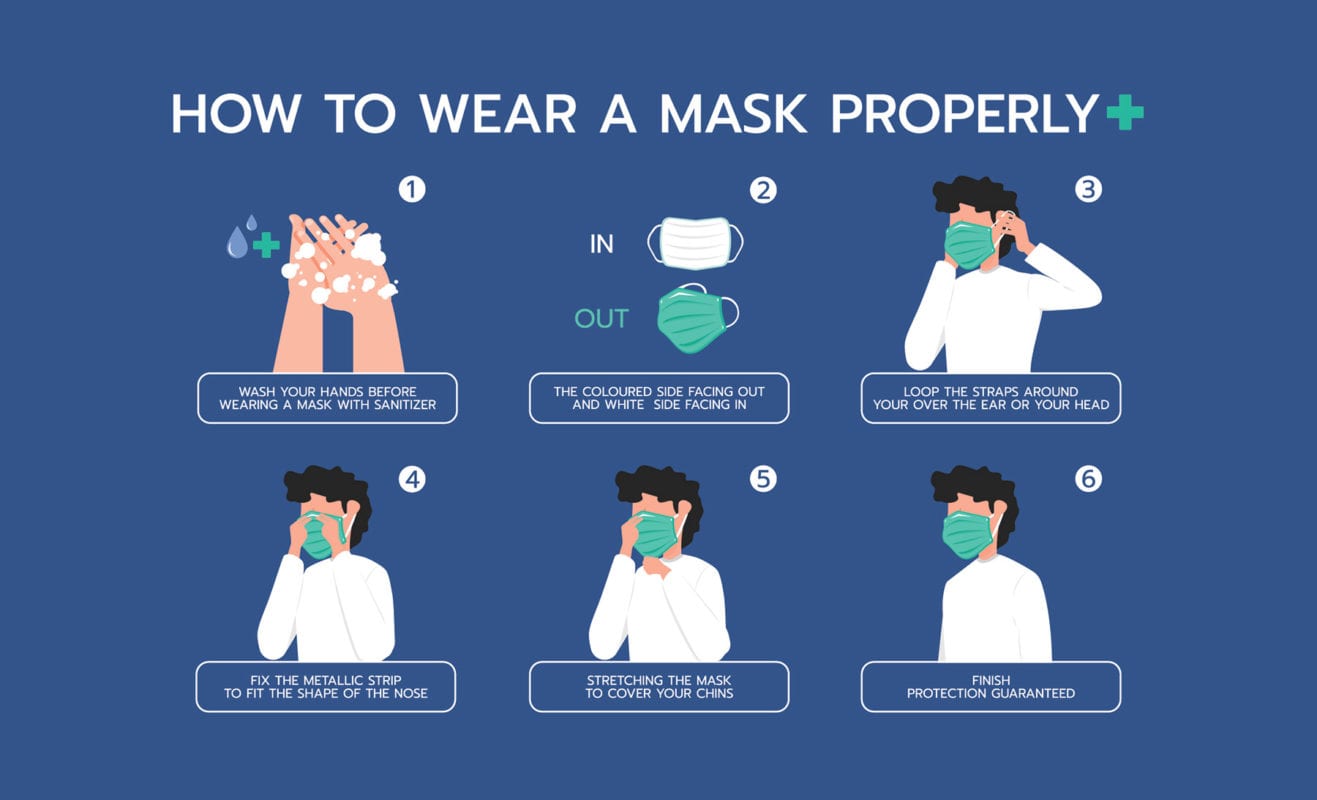No products in the cart.
Blog
How to use face mask effectively
Effective Use of Face Masks
In response to the COVID-19 pandemic, and as cities and states reopen, many governments and businesses require face masks on anyone in public or stores. The world now sees itself embracing the use of these masks in public to help flatten the curve of COVID-19 infections and prevent a strong second wave of COVID-19.
Improper use of a face mask limits, or even eliminates, its effectiveness. Following these steps will help ensure that you receive the maximum protection from your mask for both yourself and others.
- Before putting on your mask, wash your hands thoroughly with soap and warm water for at least 20 seconds, making sure you reach all of the surfaces of your hands and fingers. If you do not have access to soap and water, use hand sanitizer.
- Check for tears, holes, or other imperfections in the mask. Replace any mask showing defects.
- Grab the mask by the straps. Make sure to turn the colored side away from your face.
- To place the mask on your head, hook the straps around your ears. If your mask features elastic bands, position one above your ears and the other well below your ears.
- If your mask contains a metallic band near the nose, bend it to fit the shape of your nose.
- Ensure that the mask covers both your nose and your chin.
- Adjust the mask for a snug fit.
- Avoid touching the mask once you have it in place.
- Remove the mask by using the straps. Do not touch the front of the mask during removal.
- If you can launder the mask, place it in the laundry as soon as you take it off.
- If the mask requires disposal, throw it away as soon as you take it off, wrapping it in a napkin or paper towel first.
- Wash your hands or use hand sanitizer as soon as you have disposed of the mask.
If you must wear an N95 mask, make sure that you are cleanly shaven. N95 masks rely on a tight fit. Beards and stubble allow additional a higher percentage of pathogens past the mask’s protections by preventing a tight fit.
Change your mask anytime it becomes dirty or wet. You can wash and dry cloth masks with ordinary laundry. You should dispose of other masks at once. Carry extra masks with you whenever you leave the house. Bringing additional masks with you ensures that you have an adequate supply should your mask become unwearable.
Avoid placing masks on children under two years old, people who are unconscious, and anyone else unable to remove the mask on their own. Putting masks on people in these groups risks suffocation.
If you have to touch the mask after donning it, wash your hands or use hand sanitizer first. Refrain from moving the mask to any part of your body, such as on your head or neck. Moving the mask exposes the inside of the mask to unprotected parts of your body that may contain pathogens.

